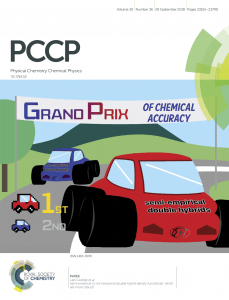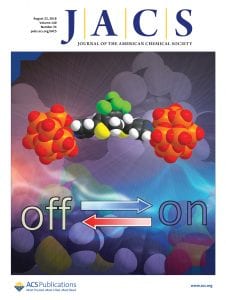The Goerigk group celebrated the end of the year early to reward themselves for all their hard work and reflect upon their successes in 2018.
In particular congratulations are due to:
- Domi and Dale, for finishing their Masters (we can’t wait to have you back next year for your PhD)
- Asim, who published two first-author papers
- Nisha and Marcos, for publishing their first paper of their PhD, which also was Nisha’s first first-author paper.
- Marcos, whose first first-author paper will be submitted later today
- Asim, Nisha and Marcos for meeting their confirmation requirements for their PhD.
- Amy, for starting her Masters project and completing her Masters progress seminar
- Julius for giving his completion seminar as part of our exchange program with Humboldt University
- Zahra for making her first computational predictions before she will go back to the lab next year.
We also used the occasion for a last get-together with Julius and Nhan who will be leaving the group for their respective home institutions next year. All the best for your future projects!
While more exciting events will be coming up in December (Marcos, Asim and Dale will attend QUACCS), this is the last entry for this year, as the group leader will take some time off.

Our recent JACS paper is mentioned in the NCI news: http://nci.org.au/research/light-activated-chemical-compound/
Our latest article in JCTC shows that van-der-Waals DFT can be sped up by a factor of two without compromising its accuracy. We also update our recommendations for GMTKN55, as we now have data for 325 dispersion-corrected and -uncorrected functionals. Our three GMTKN55 papers combined constitute the largest DFT benchmark study.
A. Najibi, L. Goerigk, “The non-local kernel in van-der-Waals density functionals as an additive correction — an extensive analysis with special emphasis on the B97M-V and ωB97M-V approaches“, Journal of Chemical Theory and Computation 2018, published online.DOI: 10.1021/acs.jctc.8b00842
Based on a big-data analysis of the Australian research landscape by League of Scholars, a special issue of The Australian’s Research Magazine named Dr Lars Goerigk as a research-field leader in “Molecular Modeling”.
We published a new collaborative paper with the Wille group, which relied on out excited-state calculations:
M. Barzegar Amiri Olia, A. N. Hancock, C. H. Schiesser, L. Goerigk, U. Wille, “Photophysical Insights and Guidelines for Blue “Turn-On” Fluorescent Probes for the Direct Detection of Nitric Oxide (NO·) in Biological Systems”, Journal of Physical Organic Chemistry 2018, DOI: 10.1002/poc.3896
Our large study showing the superiority of semi-empirical over non-empirical double-hybrid DFT is now featured on PCCP’s front cover. Well done, Nisha and Marcos. The full article can be found here.

The paper “Solution‐Processable, Solid State Donor–Acceptor Materials for Singlet Fission”, led by Dr David Jones, just got published in Advanced Energy Materials. In this experimental-computational collaboration, we investigated new options for powerful and more efficient solar cells. The article can be found here.
Welcome to Zahra and Julius. Zahra joins us temporarily for a collaborative PhD project with Colette Boskovic’s group. Julius will be here for three months and is one of the first three German students that participate in a new exchange program between the Chemistry departments of Melbourne and Humboldt Universities.
The collaborative project with the Ritchie and other groups recently published in JACS is now features on the supplementary cover.

Welcome to Michael Dardis who explores what it is like to be a Theoretical Chemist as part of his 6-week CHEM30013 research project.


